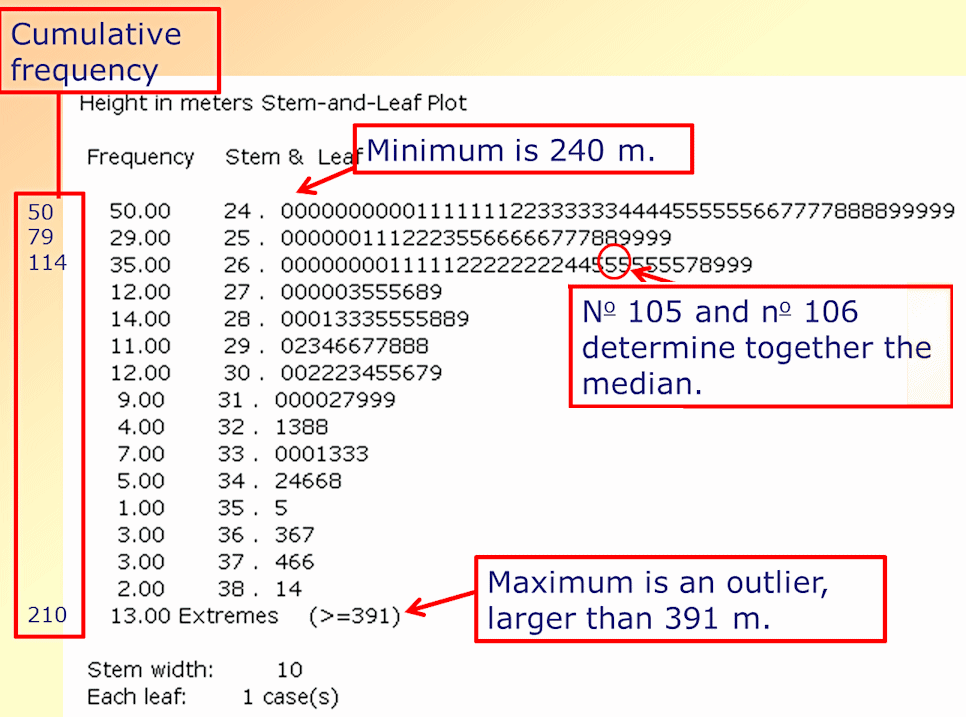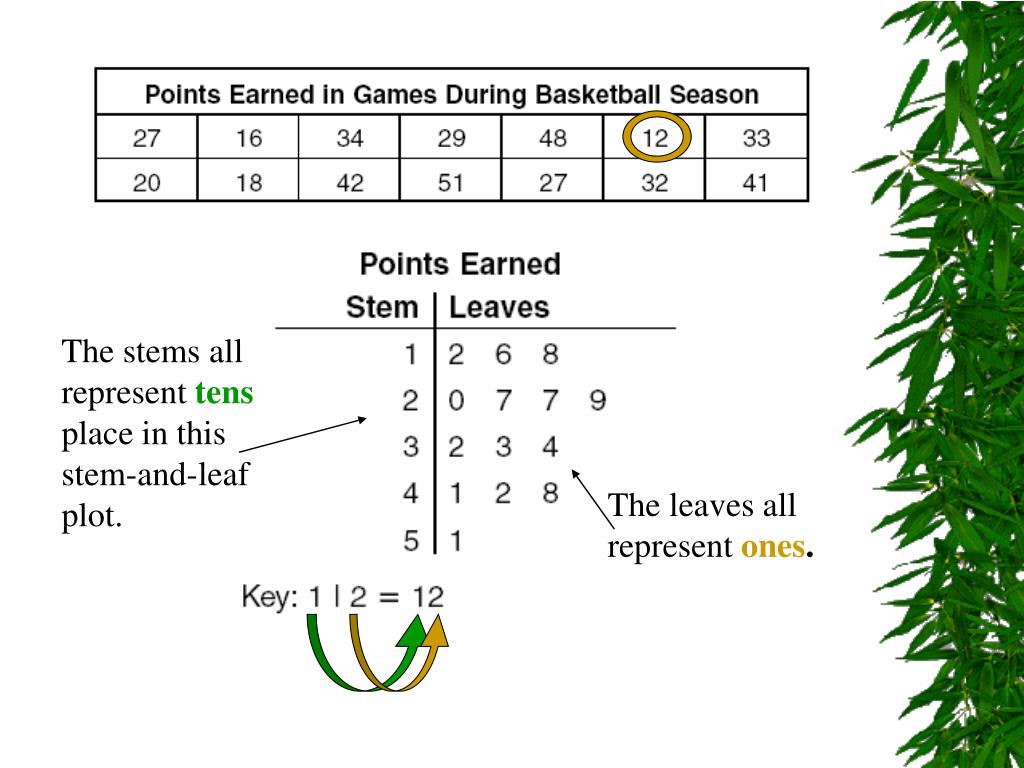

This simple plot helps us get an idea of the distribution of the points scored by the 16 players in this dataset. SPSS: Stem-and-leaf plot This document will explain how to generate a Stem-and-leaf plot using SPSS as shown below.

The Stem column displays the first digit for each data value while the Leaf column displays the second digit.įor example, the first leaf shown in the first row represents the player who averages 5 points per game:Īnd the last leaf shown in the last row represents the player who averages 31 points per game: To show this, Table 2.6 contains a stem-and-leaf display of the variable APOFFER, which indicates the number of advanced placement courses offered at the school that the student attended. With larger data sets, such as the NELS, the stem-and-leaf displays can be more complicated. Once we click OK, the following stem-and-leaf plot will appear: The stem-and-leaf display drops the units digit in this case. Then we need to make sure Plots is selected under the option that says Display near the bottom of the box. To create a stem-and-leaf plot, we need to drag the variable points into the box labelled Dependent List. Spread: The spread shows how much your data vary. Type the sample (comma or space separated) Non-numeric values will be ignored. To generate numerical descriptive statistics, a stem-and-leaf display, a boxplot, and ahistogram for the quantitative variable xxx (any quantitative. To create a stem-and-leaf plot for this dataset, click the Analyze tab, then Descriptive Statistics, then Explore. The leaf unit at the top of the plot indicates which decimal place the leaf values represent. Stem-and-Leaf Plot Maker Instructions: The following graphical tool creates a Stem-and-Leaf on the data you provide in the box below. Suppose we have the following dataset that shows the average points per game for 16 basketball players: This tutorial explains how to create a stem-and-leaf plot in SPSS. It’s a useful plot for easily visualizing the distribution of a dataset. Draw the leaves as 1's place value.A stem-and-leaf plot displays data by splitting up each value in a dataset into a stem and a leaf. Step 4 - Draw the stem numbers as 10's place-value digits 5, 6, 7, 8 and 9 (each number is representing 10 units). Step 3 - Group the numbers based on stem value.

Step 2 - Choose step as largest place value. Step 1 - Sort the numbers in ascending order.

Exampleĭraw Stemplot diagram for the following data points. Stems and leaves may be labelled as - millions, thousands, ones, tenths, etc. In figure above, the stems are tens (here 5 represents 50, 6 represents 60, and so on) and the leaves are actual values. In a stemplot, left side entries are called stems and the right side entries are called leaves. A Stemplot is used to draw quantitative data with fewer than 50 observations. Learn step-by-step how to create, read, and interpret information on stem-and-leaf plots. Stemplots are also called stem and leaves plot as there is one step with largest place value digits on the left and at leaf(ves) to the right. Stem-and-leaf plots are visual tools used to organize data without charts and graphs. Stemplots are similar to histogram with the difference that in histogram, bars are used to compare data and in case of stemplots leaves represents actual numbers to be compared. Regression Intercept Confidence Interval.Process Capability (Cp) & Process Performance (Pp).Data collection - Questionaire Designing.


 0 kommentar(er)
0 kommentar(er)
